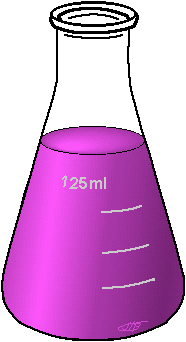The humble fruit fly, Drosophila melanogaster
An Introduction
|
André Karwath
|
Morphology of Drosophila melanogaster
|
V. Hartenstein, FlyBase
Color graphic side view of the exterior morphology of Drosophila melanogaster.
|
Drosophila melanogaster is commonly known as the fruit fly, a little insect about 3mm long and 2 mm in width. Its eggs are about half a millimeter long. Like all insects, Drosophila is covered in a chitinous exoskeleton; has three main body segments; and has three pairs of segmented legs. And as with other flies, Drosophila has a single pair of wings on its thorax middle section. The last segment of the thorax has a pair of rudimentary wings called halteres that serve as “knobby” balancing organs.[1]
Drosophila‘s life cycle
|
FlyMove
|
Like all members of the order Diptera, Drosophila goes through the entire metamorphosis cycle. Reproduction in Drosophila is rapid.[1] The female after mating will lay approximately 400 eggs which take about 12 hours to hatch. Over the next six days, the continuously growing and eating larva will molt two times and end up as an immobile pupa. During the four day metamorphosis stage,[2] the larval tissues are reabsorbed and the imaginal (adult) tissues undergo extensive morphogenetic changes to form adult structures.[3] Twelve hours after eclosion, the adult Drosophila becomes fertile and the female becomes receptive to courting males.[2]
The period of time is quit sensitive to temperature. The above times represents 25°C (77°F) and decreasing the temperature down to 18°C (64°F) will double the development time.[2] A single pair of flies can produce hundreds of offspring within a couple of weeks, and the offspring become sexually mature within one week.[1]
Geographical distribution
|
Image Editor
The above figure shows the origin distribution of Drosophila melanogaster.
Image Editor
The modern day distribution of Drosophila melanogaster.
|
Originally native to the Old World tropical regions, man has introduced Drosophila melanogaster to every continent of the world except Antarctica. It can survive in a wide range of habitats. It is limited by cold temperatures and the lack of water. Drosophila can adapt to temperatures that are colder then it could normally survive in by utilizing buildings built by man. The only aspects that limit the habitats Drosophila melanogaster can live in is temperature and availability of water. The preference for moist environments is indicated by its scientific name, Drosophila, which means “lover of dew.”[1]
Drosophila‘s behavior
|
T. Chapman, PLoS Biology
A Drosophila melanogaster couple mating.
Jim Kalisch, UNL Entomology
Drosophila melanogaster larvae feeding in a peach.
|
Drosophila melanogaster has simplistic behavior. They are easily drawn towards light or the smell of any food source, and will almost indiscriminately mate with any individual of the opposite sex.[1]
The adults thrive on rotting plants, spoiled fruit and fermenting liquids. The female looks for fruit that is green or only slightly ripened fruit. Her objective is to find fruit that will be just starting to rot when her eggs hatch.[1]
Pure gold — Drosophila use in biological research
 Paul Whitington, U of Melbourne
Drosophila melanogaster in an incubator
|
“Drosophila melanogaster is one of the most valuable of organisms in biological research. Originally, it was mostly used in genetics, for instance to discover that genes were related to proteins and to study the rules of genetic inheritance. More recently, it is used mostly in developmental biology, looking to see how a complex organism arises from a relatively simple fertilized egg.” Now most of the research is concentrated in embryonic development, but there continues to be research focused on the development of the compound eye, the wings, legs, and other organs. “Drosophila is so popular, it would be almost impossible to list the number of things that are being done with it.”[2]
|
Gary Hime, U of Melbourne
Researcher sorting Drosophila melanogaster.
|
“Drosophila has been used as a model organism for research for almost a century, and today, several thousand scientists are working on many different aspects of the fruit fly. Part of the reason people work on it is historical — so much is already known about it that it is easy to handle and well-understood — and part of it is practical: it’s a small animal, with a short life cycle of just two weeks, and is cheap and easy to keep large numbers. Mutant flies, with defects in any of several thousand genes are available, and the entire genome has recently been sequenced.”[4]
Model organism with super genes
|
Dr. Elissa Lei, NIH
Drosophila salivary gland polytene chromosomes.
|
“The genes involved in the development of Drosophila, with few exceptions, are the same as those involved in the development of higher organisms. Developmental biology studies the sequential activation and interaction of genes, in relation to developing morphology. Right now, Drosophila is the only organism for which one can begin with a list of genes active in the egg and follow the morphological changes and gene activations through to adulthood.[4]
“Drosophila studies have provided the widest knowledge base available for any single organism; accordingly, developmental biologists use the fly to ferret out the activity of genes with similar functions in higher organisms. Despite its small size, the fly is by no means a small developmental problem. Drosophila is just one level of magnitude less complex than you or I. If you know the genes involved in the development of the fly, you also know, to a reasonable approximation, the genes involved in the development of the worm, the fish, the mouse, and for that matter, ourselves.”[4]
Fruit flies relate to human
|
Image Editor
Drosophila melanogaster is used to study medical conditions in humans.
|
“Believe it or not, fruit flies have many things in common with humans! Fruit flies and humans share many human disease genes, cellular processes, brain cell development, and behaviors. For example, fruit flies that are deprived of sleep have reduced ability to learn. Fruit flies also can sense the direction of gravity.”[4]
Sources
- Miller, C.; Drosophila melanogaster (On-line), Animal Diversity Web; 2000. Accessed October 27, 2008 @ http://animaldiversity.ummz.umich.edu/site/accounts/information/Drosophila_melanogaster.html.
- Manning,Gerard; A quick and simple introduction to Drosophila melanogaster; The WWW Virtual Library: Drosophila; October 1, 2006. Accessed October 26, 2008 @ http://ceolas.org/VL/fly/intro.html.
- Wikipedia; Drosophila melanogaster (webpage); Wikipedia; Wikimedia Foundation; October 12, 2008. Accessed October 27, 2008 @ http://en.wikipedia.org/wiki/Drosophila_melanogaster.
- Brody, Thomas B.; Meet the Interactive Fly; The Interactive Fly [edition 53], sponsored by Society for Developmental Biology (http://www.sdbonline.org/); August 24, 2008; Accessed October 27, 2008 @ http://www.sdbonline.org/fly/aimain/1aaintro.htm.
- Navarro, B. J. and Elland, Carol (Editor); Studying Drosophila; Flies in Space (website); NASA; September 2006. Accessed October 27, 2008 @ http://quest.nasa.gov/projects/flies/species.html.
A Selection of Good Drosophila Books for Beginners
| A “brilliant book for the beginners to get a feel of Drosophila. Majority of new fly workers use this as a guide to understand various aspects of fly genetics, as it is well written.This book covers all important aspects which one encounter while studying Genetics of fly. Hence makes it a must read for all beginners” — Hoxful | The book takes a practical approach to performing various experiments with flies. | An edited book that covers lab culture, molecular biology, and mutagenesis techniques. | This is a reprint of the classic ‘Demerec’ book of 1950. Much of the descriptive biology of the fly is covered in this book. |
 Fly Pushing: The Theory and Practice of Drosophila Genetics |
 Drosophila: Methods and Protocols (Methods in Molecular Biology) |
 Drosophila: A Practical Approach (Practical Approach Series) |
 Biology of Drosophila |
A Selection of Additional Internet Resources
- FlyBase
FlyBase is the core Internet resource for Drosophila researchers, with information on stocks, genes, mutants, researchers, publications and much much more. - The Interactive Fly
An ambitious and extensive hypertext encyclopedia of fly genes and developmental processes, and a great starting point. - FlyMove
Excellent learning resource, with extensive pictures and animations of embryonic development. - The Animal Diversity Web
Animal Diversity Web (ADW) is an online database of animal natural history, distribution, classification, and conservation biology at the University of Michigan. Animal Diversity Web has thousands of species accounts about individual animal species. This online encyclopedia can be used as a science learning tool and a virtual museum. It is written largely by and for college students. - The Encyclopedia of Life
The Encyclopedia of Life (EOL) is a project to organize and make available via the Internet virtually all information about life present on Earth. At its heart lies a series of Web sites — one for each of the approximately 1.8 million known species. Each site has content ranging from historical literature and biological descriptions to images, videos and distribution maps. - Other resources
A link to a page on The Interactive Fly website with a list of other resources.

















The part I found most interesting was the similarities of fruit flies and humans. I never knew that fruit flies were used to study medical conditions in humans. What the heck was Sarah Palin talking about!?!?! Fruit fly research is extremely important.
Pingback: Nice Mating photos | Marriage Relation
If putting the flies in the vials in the 25 degrees C incubator do they stay 24/7 in darkness?
I’m curious how the current range map for this fly was obtained.
Also, for the original distribution – this species originated from sub-Saharan Africa only, and probably south of the Congo basin.
Ferns are also an extremely diverse family of plants,
as they can be suited to a variety of different weather conditions and situations, and varieties can be found for virtually any garden.
In early March, 2011 an announcement from the Alfred Wegener Institute in
Germany stated that by the end of winter that the ozone layer over the Arctic
Circle had been reduced by fifty percent. Why don’t you try having an unencumbered day tomorrow.